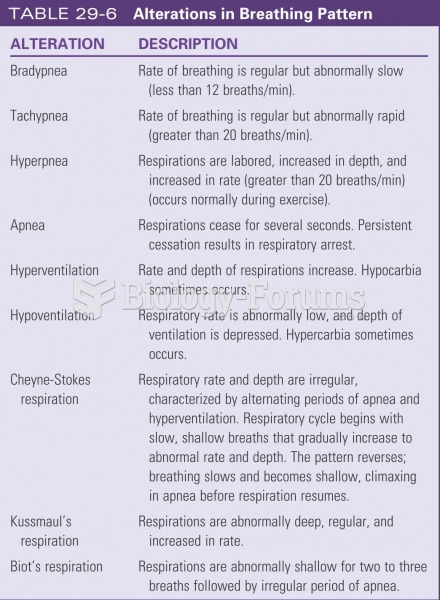|
|
|
Cytomegalovirus affects nearly the same amount of newborns every year as Down syndrome.
After 5 years of being diagnosed with rheumatoid arthritis, one every three patients will no longer be able to work.
Dogs have been used in studies to detect various cancers in human subjects. They have been trained to sniff breath samples from humans that were collected by having them breathe into special tubes. These people included 55 lung cancer patients, 31 breast cancer patients, and 83 cancer-free patients. The dogs detected 54 of the 55 lung cancer patients as having cancer, detected 28 of the 31 breast cancer patients, and gave only three false-positive results (detecting cancer in people who didn't have it).
Eat fiber! A diet high in fiber can help lower cholesterol levels by as much as 10%.
The National Institutes of Health have supported research into acupuncture. This has shown that acupuncture significantly reduced pain associated with osteoarthritis of the knee, when used as a complement to conventional therapies.







